The 30 Best Places to Live in Georgia: State’s Top Communities
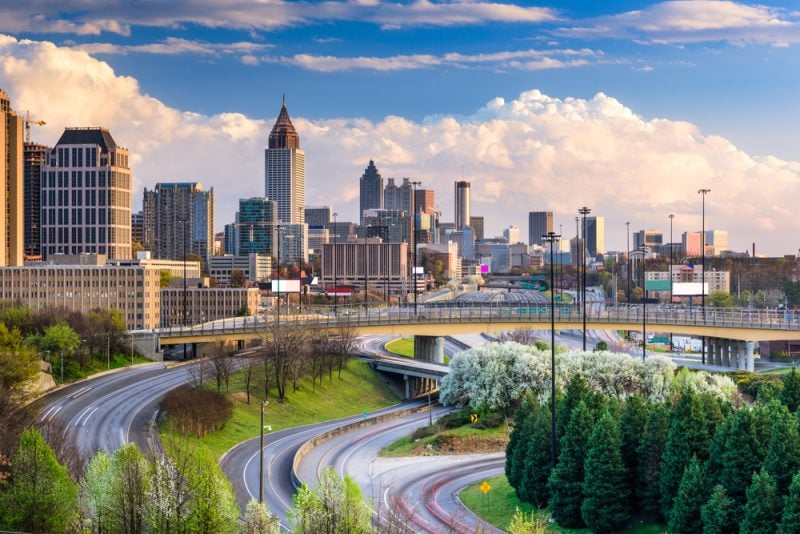
Georgia offers residents a compelling blend of Southern charm, economic opportunity, and geographic diversity that continues to attract newcomers from across the nation.
The state combines thriving metropolitan areas with historic towns, coastal communities, and mountain regions, creating options for virtually every lifestyle preference and budget.
This comprehensive guide examines thirty exceptional communities throughout Georgia, evaluating factors such as cost of living, job markets, schools, safety, and quality of life to help prospective residents make informed decisions.
From bustling urban centers like Atlanta and Savannah to family-friendly suburbs such as Alpharetta and Johns Creek, each location presents unique advantages and characteristics that define the best places to call home in the Peach State.
Here are the 30 best places to live in Georgia:
30. McDonough

McDonough sits in northwestern Georgia and houses over 22,000 residents. The city earned recognition as the “National Main Street City” and ranks #22 in Georgia for livability according to Bestplaces.net.
The downtown area features local restaurants, shops, and live entertainment venues. Residents benefit from McDonough’s proximity to Atlanta while enjoying a smaller city atmosphere.
The city offers several parks and recreational areas for outdoor activities. Historical sites and events celebrate McDonough’s heritage throughout the year.
Housing quality varies significantly across different neighborhoods within the city. The real estate market reflects this disparity in home values and amenities.
McDonough provides access to both urban conveniences and suburban living. The community maintains a friendly atmosphere that attracts families and professionals seeking alternatives to larger metropolitan areas.
29. Fairburn
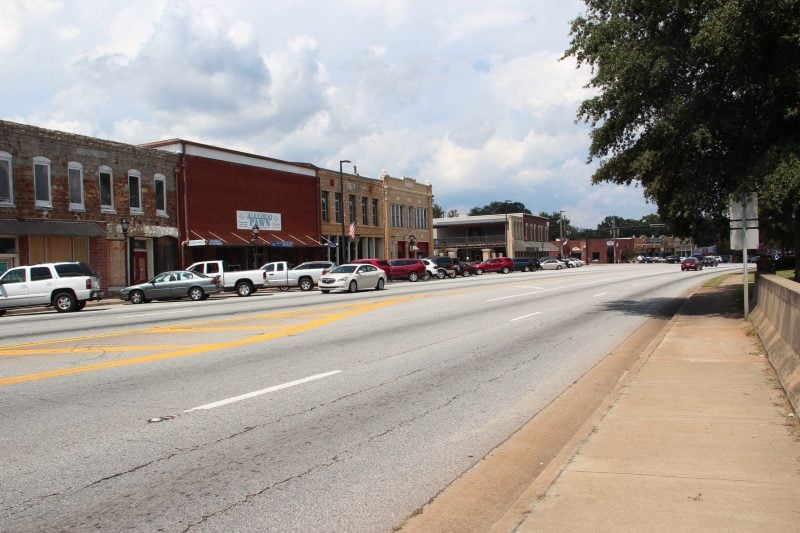
Fairburn is a suburb of Atlanta located in Fulton County with a population of 16,609. The city offers residents a sparse suburban feel with plenty of parks and green spaces.
Most residents own their homes in this family-friendly community. Young professionals and families make up the majority of the population, creating a welcoming neighborhood atmosphere.
Fairburn ranks 17th out of 522 most livable places in Georgia according to Best Places. The city received a 6.8 out of 10 livability score based on factors like crime rates and cost of living.
The unemployment rate sits at 4.5%, which is lower than many comparable areas. This economic stability contributes to the community’s appeal for working families.
The city combines small-town charm with easy access to Atlanta’s urban amenities. This proximity allows residents to enjoy suburban living while maintaining convenient access to metropolitan opportunities.
28. Suwanee

Suwanee ranks as one of Georgia’s most desirable communities, located just 30 minutes from Atlanta. This Gwinnett County suburb serves approximately 21,811 residents in a dense suburban setting.
The city earned recognition as the 27th best place to live for families nationwide according to Fortune magazine. US News and World Report previously ranked Suwanee 10th in the nation for best places to live.
Most residents own their homes in this well-established community. The area offers numerous restaurants, parks, and recreational facilities for families and professionals alike.
Suwanee features distinctive parks and hosts popular community events throughout the year. Local entertainment includes multiple breweries, with Stillfire Brewing offering craft beer and gastropub dining.
The city maintains lower crime rates and higher quality of life standards compared to many Georgia communities. Housing values vary significantly across different neighborhoods within Suwanee’s boundaries.
27. Grovetown
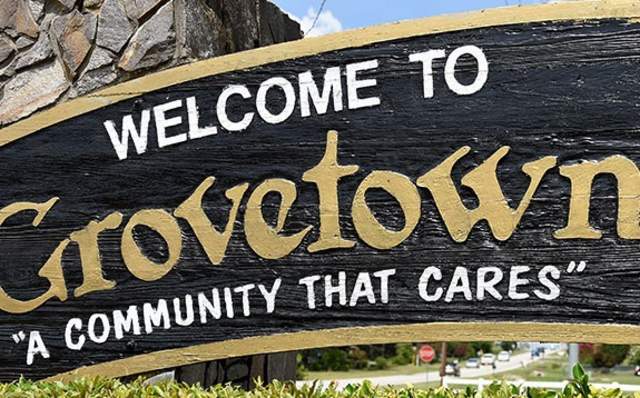
Grovetown is a rapidly growing suburb of Augusta with a population of 16,516 residents. The city sits in Columbia County and offers residents a suburban-rural mix environment.
Most residents own their homes in this family-friendly community. The area features numerous parks and maintains a strong sense of community atmosphere.
Grovetown’s proximity to Fort Gordon makes it attractive to military families and defense contractors. The city has transformed from a small village into a progressive community with modern amenities.
The local school system receives high marks from residents. New educational facilities have been built to accommodate the growing population.
Housing values vary significantly across different neighborhoods within the city. The cost of living remains relatively affordable compared to larger metropolitan areas.
Grovetown provides easy access to Augusta while maintaining its small-town character. The area has experienced substantial retail and commercial development in recent years.
26. Jesup

Jesup sits in Wayne County with a population of approximately 9,500 residents. The small city offers an affordable cost of living that runs about 4% below the national average.
The town benefits from its strategic location near Savannah and Georgia’s coast. This proximity provides residents access to larger city amenities while maintaining small-town charm.
Housing costs remain notably low compared to other Georgia cities. The railroad industry continues to provide employment opportunities for local workers.
Crime rates stay relatively manageable for a city of this size. Public schools serve the community adequately according to state rankings.
Jesup appeals to those seeking affordability and a slower pace of life. The town works well for retirees or families looking to stretch their budget further.
25. Norcross
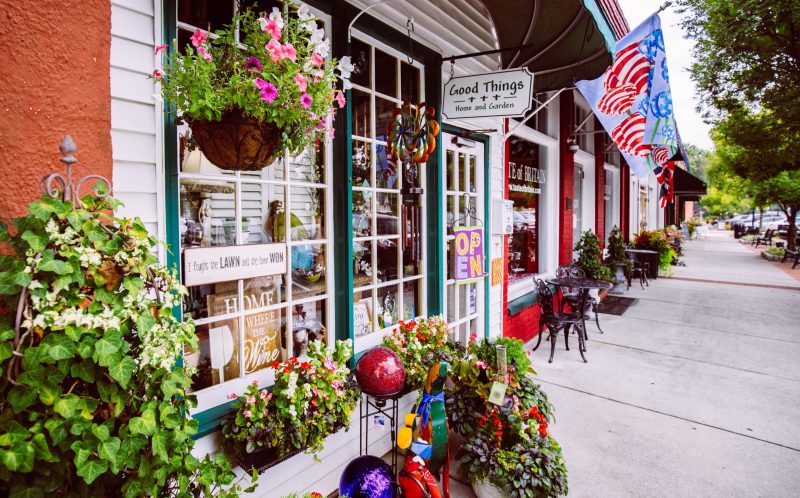
Norcross sits in Gwinnett County just outside Atlanta with a population of 17,669. This affluent suburb offers residents a dense suburban feel with tree-lined streets and classic homes.
The city provides excellent accessibility to Atlanta. Commutes to Midtown take 20-30 minutes without traffic, though rush hour extends travel to 45+ minutes.
Norcross features numerous restaurants and parks for residents. Little Mulberry Park offers hiking trails and lake fishing opportunities.
The crime rate runs about 58% higher than Georgia’s average and 62% above national rates. Despite these statistics, Norcross ranks among the top 30 safest cities in Georgia.
Most residents own their homes in this community. The central location makes errands convenient, with groceries and restaurants typically within a 5-10 minute drive.
24. East Cobb

East Cobb stands out as an unincorporated community in Cobb County, located just north of Atlanta. Money Magazine recognized it as Georgia’s best place to live in 2016.
The area attracts families with its top-rated schools and safe neighborhoods. Five zip codes define East Cobb, with 30062 representing the central area where average home prices reach $350,100.
Residents enjoy abundant green spaces and recreational activities throughout the community. Cultural events, farmers markets, and live performances create strong neighborhood connections.
East Cobb offers convenient access to Atlanta while maintaining its suburban charm. The community has evolved from chain restaurant dominance to embracing local mom-and-pop establishments that reflect authentic Southern hospitality.
23. East Point
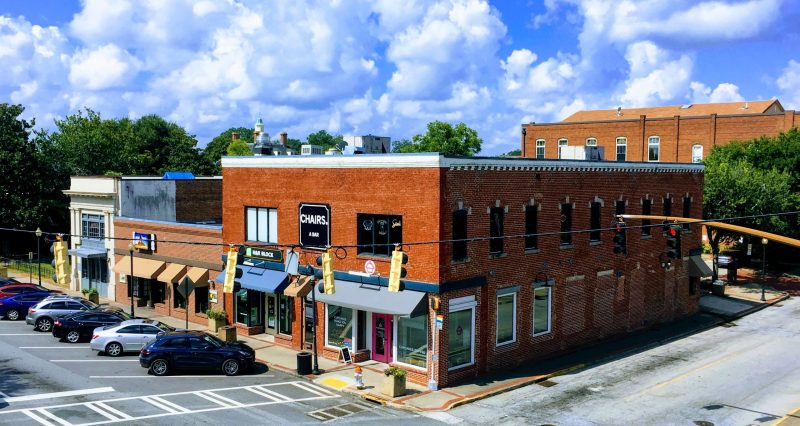
East Point has earned recognition as one of Georgia’s top suburbs to live in for 2025. The city ranks #3 in Best Places to Live in Fulton County, establishing its reputation among Atlanta-area communities.
Located in Fulton County, East Point offers residents a safe and comfortable environment. The city maintains low crime rates and provides access to quality schools throughout the area.
Employment opportunities remain accessible for East Point residents. The city’s proximity to Atlanta creates connections to major job markets while maintaining its suburban character.
East Point developed around railroad infrastructure and historically served as a summer resort destination for Atlanta residents. Today it functions as an established Atlanta suburb with diverse housing options.
The community features luxury homes alongside quaint neighborhood settings. Residents can choose from various housing styles that suit different preferences and budgets.
22. Flowery Branch

Flowery Branch stands as one of Georgia’s premier suburban communities, located 50 miles northeast of Atlanta in Hall County. This small city offers residents a dense suburban atmosphere with a population of 10,286.
The town ranks impressively across multiple categories. It places 30th out of 167 for best suburbs for young professionals in Georgia. Families find it appealing, ranking 65th out of 167 for best suburbs to raise children.
Most residents own their homes in this community. The area provides numerous restaurants and parks for entertainment and recreation.
Home prices in Flowery Branch exceed Georgia’s state average of $231,203. The cost of living remains reasonable compared to similar-sized cities nationwide.
The climate offers pleasant conditions during May, September, and October. Winter months of January and December tend to be less comfortable for outdoor activities.
21. Lawrenceville
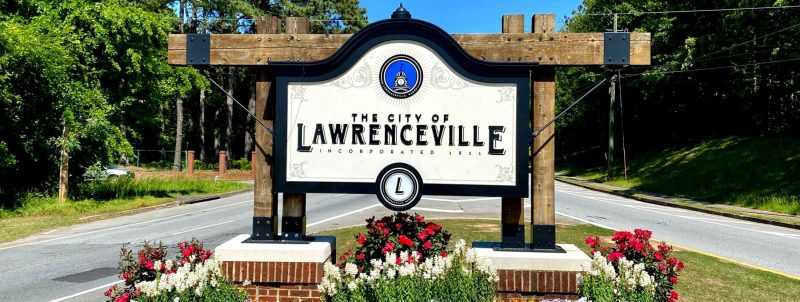
Lawrenceville sits 30 miles northeast of Atlanta in Gwinnett County. The city has a population of 30,626 residents living in a dense suburban environment.
The area offers excellent public schools that attract many families. Young professionals also choose Lawrenceville for its convenient location and amenities.
Parks are abundant throughout the city, providing recreational opportunities for residents. The downtown area has undergone revitalization efforts in recent years.
Lawrenceville ranks well for affordability compared to other Georgia cities. The cost of living makes it accessible to various income levels.
Safety ratings contribute to the city’s appeal for families. Cultural events and local restaurants add to the community’s character.
The suburban atmosphere creates a family-friendly environment. Most residents rent their homes rather than own them.
20. Kennesaw

Kennesaw ranks as the 14th best suburb to live in Georgia according to recent rankings. The city consistently performs well across multiple quality of life metrics.
The community offers residents easy access to outdoor recreation and family-friendly amenities. Kennesaw Mountain provides hiking trails and natural areas for outdoor enthusiasts.
Schools in the area maintain good reputations among families. The city’s clean environment and well-maintained neighborhoods attract residents seeking suburban comfort.
Kennesaw’s location provides convenient access to Atlanta while maintaining a smaller town atmosphere. The local economy remains stable with various employment opportunities.
The city features parks, recreational facilities, and a growing food scene. Residents appreciate the balance between suburban tranquility and urban accessibility.
Housing options include established neighborhoods and newer developments. The cost of living remains reasonable compared to other metro Atlanta suburbs.
19. Woodstock
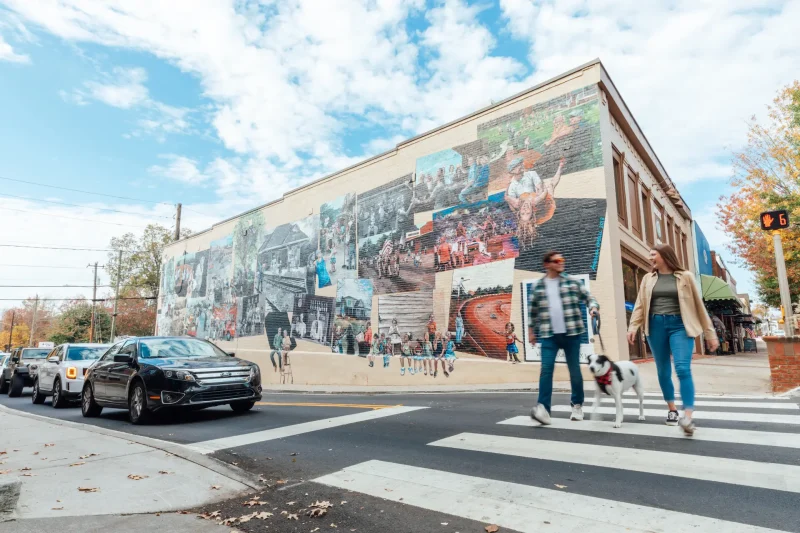
Woodstock sits approximately 30 miles northwest of Atlanta in Cherokee County. This fast-growing suburb has earned recognition as one of Georgia’s most desirable places to live.
Money magazine ranked Woodstock as the 17th best place to live in America. The ranking highlighted the city’s strong economy, job growth, and resilient housing market.
The city offers residents access to both metropolitan conveniences and small-town charm. Woodstock’s downtown district features over 35 locally owned shops, restaurants, and entertainment venues.
Home to around 30,000 residents, Woodstock provides easy access to Atlanta while maintaining its own distinct character. The community has experienced significant development in recent years.
Housing costs in Woodstock exceed Georgia’s state average of $231,203. The city attracts families and professionals seeking quality neighborhoods with strong community connections.
18. Cumming

Cumming sits in Forsyth County and offers residents access to Lake Lanier’s recreational opportunities. The city consistently ranks among Georgia’s top places to live due to its combination of natural beauty and suburban amenities.
The area features highly-rated schools that attract families seeking quality education options. Housing affordability remains competitive compared to other desirable Georgia locations.
Residents enjoy easy access to North Georgia’s mountains while maintaining proximity to Atlanta’s employment opportunities. The city provides numerous shopping and dining establishments for daily needs.
Safety ratings contribute to Cumming’s appeal among potential residents. The community has grown steadily while maintaining its small-town character.
Lake access provides year-round recreational activities including boating, swimming, and waterfront events. The city’s location offers both natural recreation and urban conveniences within reasonable driving distances.
17. Rome
Rome sits in northwest Georgia, offering residents a blend of small-town charm and urban amenities. The city has earned recognition as one of the top places to live in Georgia.
Rome receives a livability score of 66 out of 100, placing it among Georgia’s most desirable cities. The cost of living remains below the national average, making it an affordable option for families and professionals.
The city provides access to quality schools and maintains reasonable safety standards. Rome’s location offers convenient access to both Atlanta and other regional centers.
Local amenities include parks, recreational facilities, and cultural attractions. The downtown area features historic architecture and local businesses that contribute to the community’s character.
Rome attracts residents seeking a balance between affordability and quality of life in Georgia.
16. Gainesville
Gainesville stands out as one of North Georgia’s most desirable places to live. The city serves as the county seat of Hall County and attracts residents with its balanced urban-suburban atmosphere.
The community of 44,051 residents enjoys above-average public schools and numerous parks. Families and young professionals make up a significant portion of the population, creating a diverse community with moderate political views.
Safety and affordability rank among Gainesville’s strongest attributes. The city consistently receives high marks for both factors, making it accessible to various income levels.
Most residents choose to rent their homes in this area. The real estate market maintains balance with properties averaging 49 days on the market.
Nearby communities like Braselton and Hoschton enhance the region’s appeal. These towns offer additional housing options, including maintenance-free communities for retirees and active adult neighborhoods.
15. Milton
Milton stands out as one of Georgia’s premier suburban communities in northern Fulton County. The city earned recognition as Georgia’s safest place to live in 2021 and ranks fourth statewide for raising families.
Residents enjoy a median household income of $127,487, significantly above the national average. The poverty rate sits at just 4.5%, demonstrating the community’s economic stability.
Milton preserves its rural character through careful planning and development restrictions. Tree-lined streets and sprawling estates define the landscape, creating an attractive residential environment.
The city prioritizes education and maintains strong schools that appeal to families. Safety remains a top concern, with residents reporting high levels of security in their daily lives.
The historic Crabapple District offers shopping, dining, and cultural attractions. This area showcases local businesses and provides entertainment options for residents and visitors.
Milton combines small-town charm with suburban amenities, making it an appealing choice for those seeking quality of life in the Atlanta metropolitan area.
14. Peachtree City
Peachtree City sits just 30 miles from downtown Atlanta, offering suburban convenience with a vacation-like atmosphere. This planned community was built in the 1950s and houses approximately 38,977 residents.
The city is famous for its extensive golf cart trail system. Most residents use golf carts to navigate the community, making it a unique transportation feature in Georgia.
Peachtree City features two lakes and numerous parks throughout the area. The abundance of green spaces and natural beauty attracts families seeking outdoor recreation opportunities.
Located in Fayette County, the city provides a sparse suburban feel where most residents own their homes. The community maintains well-maintained neighborhoods and family-friendly amenities.
Home prices in Peachtree City exceed Georgia’s state average of $231,203. The higher cost reflects the desirability and quality of life the planned community offers residents.
13. Duluth
Duluth stands out as one of Georgia’s premier places to live, earning recognition throughout the state. This Atlanta suburb in Gwinnett County houses approximately 31,958 residents in a dense suburban setting.
The city offers residents a high quality of life with most people owning their homes. Well-maintained neighborhoods line the streets with beautiful houses creating an attractive community atmosphere.
Duluth provides abundant dining and recreation options. Residents enjoy access to numerous restaurants, coffee shops, and parks throughout the area.
The city experienced rapid growth from under 2,000 residents in 1970 to over 22,000 by 2000. This expansion included development of entertainment venues, convention facilities, and shopping centers.
Duluth receives high livability rankings, scoring 77 out of 100 in comprehensive quality assessments. The area attracts families seeking excellent schools and safe neighborhoods in the northern Atlanta metropolitan region.
12. Decatur
Decatur consistently ranks as the top place to live in Georgia according to multiple ranking sites. The city maintains its position as number one on annual best places lists.
Located in DeKalb County, Decatur sits on the northern edge of Atlanta with a population of approximately 22,000 residents. The city offers a suburban feel while remaining part of the greater Atlanta metropolitan area.
Decatur excels in several key areas that contribute to its high rankings. The city scores well for education quality, diversity, and safety rates. Cost of living and housing affordability also factor into its strong reputation.
Most residents in Decatur own their homes, contributing to neighborhood stability. The city’s eclectic culture and unique quality of life set it apart from other Atlanta suburbs.
Housing quality varies significantly across different neighborhoods within Decatur. The best areas typically correlate with higher median home values and lower crime rates.
11. Columbus
Columbus stands as Georgia’s third-largest city with over 200,000 residents. The city sits along the Chattahoochee River on the Georgia-Alabama border.
Midtown ranks among the most desirable neighborhoods. It features six National Register Historic Districts with tree-lined streets and cultural attractions.
Lakebottom offers beautiful historic homes near Weracoba Park. Green Island Hills provides upscale living with scenic river views.
The cost of living remains below both state and national averages. Housing prices stay reasonable compared to other Georgia cities.
Columbus blends Southern charm with outdoor recreation opportunities. The diverse community welcomes newcomers with friendly residents.
The city’s strong economy supports steady growth each year. Multiple cultures and lifestyles create varied living options for different preferences.
10. Brookhaven
Brookhaven ranks as one of Georgia’s premier places to live, consistently appearing in top 10 quality of life rankings. This DeKalb County city offers residents an urban-suburban mix just minutes from Atlanta.
The city attracts young professionals particularly well. Brookhaven received national recognition as the third best Georgia suburb for young professionals out of 164 communities.
Historic Brookhaven features prestigious homes with significant character. Ashford Park provides strong community connections for families. Lenox Park offers modern condos and townhomes near Buckhead.
Residents enjoy numerous parks, green spaces, and abundant dining options. The area maintains easy access to Atlanta’s amenities while preserving its own distinct identity.
The typical household earns $101,607 annually, well above the national median. Brookhaven’s poverty rate sits at 10.9%, which is 22% lower than the national average.
9. Sandy Springs
Sandy Springs ranks 18th among the best places to live in the United States according to recent surveys. This northern Atlanta suburb combines urban amenities with suburban comfort.
The city features diverse neighborhoods with winding roads and beautiful nature parks. Residents enjoy access to tall buildings, quality restaurants, and active nightlife options.
Many Fortune 500 companies have established headquarters in Sandy Springs. This creates abundant job opportunities while maintaining proximity to Atlanta’s metropolitan area.
The community offers excellent schools and family-friendly environments. Housing options range from luxury homes to modern apartments across various price points.
Sandy Springs provides easy access to cultural attractions and entertainment venues in nearby Atlanta. Residents can commute to the city while enjoying a quieter suburban lifestyle.
The area maintains well-developed infrastructure and forward-thinking municipal leadership. Multiple outdoor recreation opportunities complement the urban suburban mix that defines the community.
8. Marietta
Marietta stands as one of Georgia’s most desirable places to live, combining small-town charm with big-city convenience. Located just 20 miles northwest of downtown Atlanta, this historic city offers residents easy access to metropolitan amenities while maintaining its own distinct character.
The city serves 61,773 residents with an urban-suburban mix that appeals to families, professionals, and retirees alike. Most residents rent their homes, creating a diverse and dynamic community atmosphere.
Marietta’s downtown area features numerous restaurants, coffee shops, and local businesses centered around the historic Marietta Square. The city hosts regular concerts and community events that strengthen neighborhood connections.
Educational opportunities rank among the city’s strongest assets, with highly-rated schools throughout the area. Residents also enjoy abundant parks and recreational facilities that support an active lifestyle.
The housing market reflects strong demand, with neighborhoods varying significantly in character and value across the city.
7. Roswell
Roswell consistently ranks among Georgia’s top places to live. This affluent Atlanta suburb in Fulton County offers residents a high quality of life with excellent amenities.
The city’s education system earns an 8 out of 10 rating. Roswell maintains one of the lowest violent crime rates in Georgia, making it exceptionally safe for families.
Historic Roswell features a charming downtown area with shops and restaurants. The Horseshoe Bend neighborhood offers upscale living with river views and golf courses.
East Roswell attracts families seeking excellent schools and community atmosphere. The median home price of around $627,000 reflects the area’s desirability.
Residents enjoy award-winning parks and easy access to the Chattahoochee River. The city’s proximity to Atlanta and Hartsfield-Jackson International Airport provides convenient urban access while maintaining suburban tranquility.
6. Johns Creek
Johns Creek earned the top spot on U.S. News & World Report’s 2025-2026 Best Places to Live rankings. This Atlanta suburb combines excellent schools, low crime rates, and strong community connections.
Located just 25 miles from downtown Atlanta, Johns Creek offers convenient access to major highways and international airports. The city maintains a population of approximately 78,937 residents.
The area boasts the nation’s lowest crime rate according to recent rankings. Top-rated public schools make it particularly attractive to families with children.
Johns Creek features diverse neighborhoods with varying home values and characteristics. The city provides ample parks and outdoor recreation opportunities for residents.
The community maintains a small-town atmosphere despite its proximity to Atlanta’s urban amenities. Previous recognition includes being named the safest place to live in the country.
5. Athens
Athens combines Southern charm with vibrant college town energy as home to the University of Georgia. The city offers residents a dense suburban feel with abundant activities and entertainment options.
The local economy benefits from 9.4% job growth in tech and healthcare sectors. This growth provides diverse employment opportunities beyond the university setting.
Athens features a renowned music scene centered in its downtown district. The area includes numerous museums, galleries, and cultural attractions that enhance quality of life.
Outdoor enthusiasts can access extensive hiking and biking trails throughout the region. The city provides walkable neighborhoods with good public transportation options.
Housing costs remain reasonable compared to many Georgia cities. The area attracts young professionals and families seeking an active community atmosphere.
Crime rates vary significantly between neighborhoods within Athens-Clarke County. Residents should research specific areas when considering relocation to the city.
4. Augusta
Augusta combines Southern charm with modern amenities along the Savannah River. The city offers affordable housing options that attract families and young professionals.
Golf enthusiasts find Augusta particularly appealing due to its world-class courses. Forest Hills Golf Club stands out as one of the state’s premier public access facilities.
The school system receives high marks from residents. Educational opportunities extend from elementary through higher education levels.
Crime rates remain relatively low in many neighborhoods. Housing quality varies significantly across different areas of the city.
The Savannah River provides beautiful parks and recreational opportunities. Residents enjoy walking trails and outdoor activities along the waterfront.
Cost of living stays below national averages. This affordability makes Augusta accessible to diverse income levels and demographics.
3. Alpharetta
Alpharetta stands out as one of Georgia’s premier suburban destinations. This thriving city in Fulton County has earned recognition as the second-best place to live in Georgia according to Travel + Leisure.
The city offers a population of approximately 66,000 residents who enjoy a dense suburban atmosphere. Most residents own their homes, creating stable neighborhood communities throughout the area.
Alpharetta’s appeal stems from its excellent educational system and strong local economy. The city consistently ranks high for economic opportunities and maintains reasonable cost of living standards compared to similar markets.
Residents benefit from numerous restaurants, coffee shops, and well-maintained parks. The city provides easy access to both small-town charm and metropolitan amenities due to its proximity to Atlanta.
Notable neighborhoods include Windward, featuring lakes and golf courses, and Avalon, offering luxury living with walkable shopping and dining options.
2. Savannah
Savannah stands out as one of Georgia’s most desirable cities for residents seeking historic charm and coastal living. The city combines Southern hospitality with rich architectural heritage in its famous historic districts.
Several neighborhoods offer distinct advantages for different lifestyles. The Historic District provides walkable streets lined with antebellum mansions and cobblestone squares. Midtown attracts residents with its mix of affordability and convenience to downtown amenities.
Dutch Island appeals to families looking for newer housing developments with modern amenities. The area maintains easy access to Savannah’s cultural attractions while offering suburban comfort.
Residents enjoy year-round mild weather and proximity to beaches along Georgia’s coast. The city’s economy benefits from its major port, tourism industry, and growing tech sector.
Savannah’s real estate market offers options from restored Victorian homes to contemporary condominiums. The presence of the Savannah College of Art and Design adds cultural vibrancy to the community.
1. Atlanta

Atlanta stands as Georgia’s largest city and economic powerhouse. The metropolitan area offers diverse neighborhoods that cater to different lifestyles and budgets.
Midtown attracts residents with its high walkability score of 87. The area provides easy access to restaurants, entertainment, and public transportation.
Buckhead appeals to those seeking luxury living. Average rent reaches $2,826, reflecting the upscale nature of this neighborhood.
Decatur draws families with its top-rated school systems. The area combines suburban comfort with proximity to downtown Atlanta.
Atlantic Station houses many young professionals. The neighborhood features highly rated public schools and modern amenities.
The city serves as a major business hub with Fortune 500 companies headquartered there. Hartsfield-Jackson Atlanta International Airport provides global connectivity.
Atlanta’s neighborhoods range from trendy urban districts to quiet residential areas. Public transportation connects various parts of the metro area efficiently.
Key Factors That Make Georgia Desirable
Georgia offers a compelling combination of affordable living costs, diverse employment opportunities, and quality public services. These three pillars create an environment where residents can build successful careers while maintaining financial stability and accessing essential services.
Affordability and Cost of Living
Housing costs in Georgia remain significantly lower than national averages. The median home price across the state sits well below coastal markets like California or Northeast metros.
Georgia residents benefit from no state income tax on military retirement pay. Property taxes stay relatively low compared to neighboring states. Utilities and transportation costs contribute to overall affordability.
Cost Comparison Examples:
Average rent for 2-bedroom apartment: $1,200-1,800 depending on location
Groceries typically cost 5-10% less than national average
Gas prices often rank among lowest in Southeast region
Rural areas offer even greater affordability. Small towns provide homeownership opportunities under $200,000. Urban areas like Atlanta still maintain reasonable costs compared to similar metropolitan markets.
Work Opportunities and Economic Growth
Major corporations maintain headquarters in Georgia. Delta Airlines, Home Depot, Coca-Cola, and UPS provide thousands of jobs. The film industry contributes over $4 billion annually to the state economy.
Technology sector growth accelerates throughout metro Atlanta. Financial services companies establish regional offices in major cities. Manufacturing remains strong with automotive plants from Kia and Mercedes-Benz.
The Port of Savannah ranks as the fastest-growing container terminal in North America. This logistics hub creates supply chain and transportation jobs. Military installations like Fort Moore support defense contractor employment.
Small business formation rates exceed national averages. Georgia’s business-friendly policies attract entrepreneurs and startups.
Quality of Education and Healthcare
Georgia’s university system includes University of Georgia, Georgia Tech, and Emory University. These institutions rank among top public and private schools nationally.
K-12 education varies by district. Suburban areas like Johns Creek and Alpharetta feature highly-rated school systems. Atlanta Public Schools has shown measurable improvement in recent years.
Healthcare infrastructure centers around major medical systems. Emory Healthcare, Piedmont Healthcare, and Augusta University Health provide comprehensive services. Rural areas maintain access through regional medical centers.
Medical research facilities attract top physicians. Centers for Disease Control headquarters in Atlanta enhances public health capabilities. Specialized treatment centers serve the entire Southeast region.
Lifestyle and Community Considerations
Georgia’s diverse communities offer distinct lifestyle advantages, from urban cultural districts to suburban family enclaves and coastal retreats. The state provides extensive outdoor recreation opportunities while maintaining strong community bonds and neighborhood safety initiatives.
Diversity of Neighborhoods
Georgia’s residential areas span from historic districts like Druid Hills with median home values of $698,000 to affordable suburban communities throughout the metro Atlanta region. Urban neighborhoods in Atlanta feature walkable streets with restaurants, shops, and cultural venues within blocks of residential areas.
Coastal communities along the Georgia coast provide beach access and maritime lifestyles. Towns like Savannah offer preserved architecture and squares dating to the 1700s. Mountain communities in North Georgia deliver four-season recreation and cooler temperatures.
Suburban developments typically feature planned communities with amenities like pools, tennis courts, and walking trails. These neighborhoods often center around top-rated school districts and family-oriented activities.
Price ranges vary significantly across regions. Rural areas and smaller towns offer lower housing costs, while Atlanta suburbs and coastal areas command premium prices for proximity to employment centers and recreation.
Access to Outdoor Activities
The state’s geography provides mountains, forests, lakes, and coastline within driving distance of most communities. North Georgia mountains offer hiking trails, waterfalls, and seasonal activities like leaf viewing and skiing at limited locations.
Lake Lanier and other reservoirs provide boating, swimming, and fishing opportunities. The Chattahoochee River system supports rafting and kayaking activities throughout the northern region.
Georgia’s coast features barrier islands accessible by ferry or causeway. Tybee Island and Jekyll Island offer beach activities, fishing, and nature preserves. State parks throughout Georgia maintain camping facilities and trail systems.
Golf courses operate year-round due to the moderate climate. Tennis and outdoor sports leagues function across most communities. Urban areas provide greenspaces and parks within residential neighborhoods.
Safety and Community Engagement
Crime rates vary significantly between communities, with suburban areas typically reporting lower incidents than urban centers. Gated communities and planned developments often employ private security services alongside local law enforcement.
Community engagement occurs through homeowners associations, local government participation, and volunteer organizations. Many neighborhoods organize festivals, farmers markets, and seasonal events that bring residents together.
Emergency services maintain response standards across most populated areas. Fire departments often operate as community gathering points for events and safety education programs.
School districts frequently serve as community focal points, with sports events and academic programs drawing neighborhood participation. Civic organizations like Rotary clubs and chamber of commerce groups provide networking and community service opportunities.





